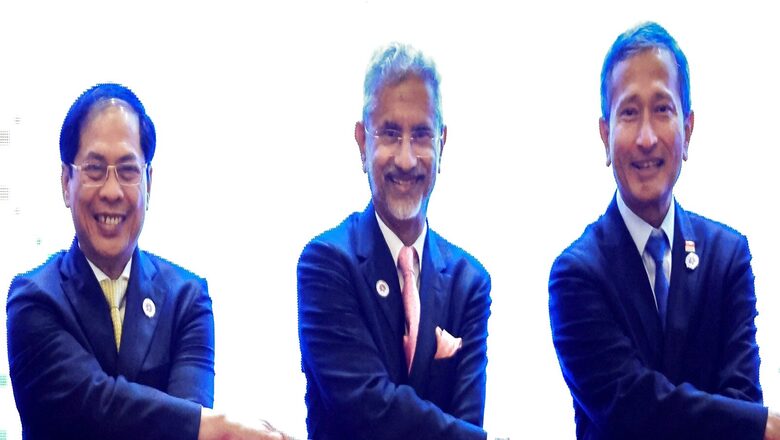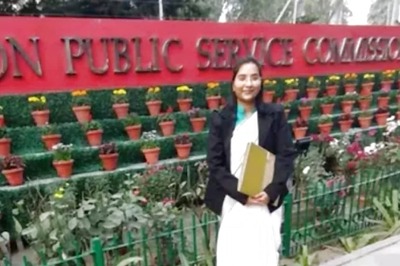
views
On 11 December, External Affairs Minister S Jaishankar, while addressing an event as part of Kashi Tamil Sangamam on ‘Contribution of temples to society and nation building’, said that India is working to restore the world’s largest Hindu temple site — the Angkor Wat temple complex — in Cambodia. The initiative is not a standalone event; rather, it is a part of the cultural diplomacy practised by the Narendra Modi government.
“The cultural diplomacy of the Modi government is focused on creating, rebuilding, and restoring our rich traditions for the benefit of the entire world. This is Vasudhaiva Kutumbakam,” Jaishankar said. He further stated that the Indian civilisation is not limited to India but is spread across various countries.
For India to become a civilisational superpower, apart from economic and military might, cultural and trade-related might is equally important, which is often called soft power. South-East Asia, usually called the ASEAN group of countries, is a natural destination to practice soft power. In the words of Joseph Nye, who coined the word ‘soft power’, this depends on ‘its culture (in places where it is attractive to others), its political values (when it lives up to them at home and abroad), and its foreign policies (when others see them as legitimate and having moral authority).’
India’s culture has been deeply embedded in South-East Asia since the times of Rajaraja-I. The temples, yoga, Ramayana and Mahabharata, and Ayurveda –South-East Asia has a lot of commonalities, culture-wise, with India. India’s political values, democracy and inclusiveness also have a lot to offer to these countries. In the 1980s, Ninoy Aquino, a Filipino politician, started his struggle of civil resistance against the dictatorial Marcos regime in the Philippines. He was influenced by Mahatma Gandhi. Later on, he was assassinated, but his struggle sparked a series of protests, resulting in the outcast of Marcos and then Aquino’s widow, Corazon Aquino, becoming the president of the republic. India’s foreign policies since the time of the non-alignment movement, and the freedom of Myanmar and Vietnam, have a legitimate value, not to mention India’s role in the solution of the Korean conflict.
But, to boost this soft power, India is promoting people-to-people relations, encouraged by cultural and trade exchanges, and promoted by sectors like tourism, hospitality, and historical conservation. This has to be reciprocal also.
Vietnam Ambassador Nguyen Thanh Hai said, “It is time for Indian tourists to visit Vietnam and explore the thousand-year cultural links between the two countries.” Contrary, the chief executive officer (CEO) of Vietnam-based Vietravel said that India, not China, is the best tourism market for Vietnam now. Vietravel is also looking forward to signing MoU with two key partners of an Indian company for two-way beneficial cooperation between Vietnam-India inbound and outbound tourism.
India has worked on the conservation of temples in other countries too. After five years of precise and rigorous work on the site, the Archaeological Survey of India has finished the conservation and restoration work on the A, H, and K group of temples at the UNESCO heritage site of My Son Sanctuary in Quang Nam province of Vietnam. The governments of India and Vietnam had signed an MoU in 2014 for the restoration of the My Son World Heritage Site.
When India and Thailand commemorated the 75th anniversary of the establishment of diplomatic relations in August this year, the Royal Thai Embassy organised multiple events to celebrate and strengthen the centuries-old cultural ties between the two nations. Minister of Culture, Tourism, Religious Trust, and Endowment Usha Thakur also gave a speech at the Bangkok EmQuartier Shopping Centre’s ‘Buddha Bhoomi India – Travelling in the Footsteps of Buddha’ programme, in which she said that Thailand tourists who wish to seek spiritual experience might consider visiting Madhya Pradesh to explore the ancient architecture and culture of Buddhism. Madhya Pradesh is home to several Hindu and Buddhist sacred sites such as Sanchi Stupa, Vidisha, Udayagiri, Amarkantak, Andher, Murelkhurd, etc. According to Thailand’s Minister of Culture, Itthiphol Khunpluem, Thai people wish to travel to India at least once in their lives. The major Buddhist centres in India include World Heritage Sanchi, Bodh Gaya, Kushinagar, and several others. The ties between the two sides are also extended to sub-regional, regional and multilateral levels, including the Mekong-Ganga Cooperation and the Bay of Bengal Initiative for Multi-Sectoral Technical and Economic Cooperation (BIMSTEC).
India and Singapore share a long history of cultural and commercial ties. The current relations between the two nations are based on similar cultures, the potential for economic growth, and expanding defence and technological ties. India and Singapore held the 16th round of Foreign Office Consultations in August to reaffirm their resolve to strengthen the strategic alliance and foster multifaceted relationships.
Of course, India’s ties with the ASEAN countries are not flawless. There were several issues with some countries when they poked into the internal issues of India, but the overall picture is still decent. Also, soft power is necessary, but a standalone is sufficient to make it a superpower. It must be accompanied by a strong military and economic power, enough to assert its influence in the new world.
Harshil Mehta is an analyst who writes on international relations, diplomacy, and national issues; Nidhi Sharma is a student of the Indian Institute of Mass Communication. Her focus is mainly on international relations and strategic affairs. The views expressed in this article are those of the author and do not represent the stand of this publication.
Read all the Latest Opinions here















Comments
0 comment